![]()
For those of you who have listened to previous true crime podcasts here on this site, you will have listened to the tragic case of Emily Holland – a 7 year old girl who was brutally attacked and then dismembered by a local barber by the name of William Fish. This event took place during the early months of 1876 and caused a sensation only topped by that of the famous Jack the Ripper murders that would occur some 12 years later, due its barbarity and callousness on a selfless little girl.
So no-one would ever expect something like that to ever happen again and especially within the same town.
How wrong they would be.
On Tuesday, the 8th November, 1892 – 9 year old Alice Barnes had spent the early part of the day at school and returned home at around noon. After washing some dishes, she would leave home just before 1pm with her sister, Mary, to take cows down to the pastures within Witton Park – something which she did on a regular basis as her father, Edward had rented out the fields close to his family farm which was situated around 10 to 15 minutes’ walk away from Witton.
Passing through Selbourne Street and then Spring Lane before finally making their way down Buncer Lane, Alice and Mary soon reached the entrance to the park, and upon arriving, Alice told Mary to return back to the farm and to take a calf that had strayed off into a field with her, which she did. Mary returned back at the farm around 10 to 15 minutes later but when Alice didn’t return back and after half-an-hour had passed, her father, asked his son, Thomas, to make his way down to Witton to see where she was.
As Thomas made his way down Buncer Lane, just one of the few roads that would eventually lead to one of the entrances into Witton Park, he came across a small group of people that had gathered on the roadside, seemingly shocked and horrified at something that was lying on the ground.
Nearing them, it would soon become apparent, possibly from the clothing that she was wearing, that that something in question was none other than his sister, Alice.
It’s hard to imagine what Thomas must have been going through as he ran back to his farm to tell his mother and father of what he had encountered, but one would assume he was in total shock and despair as he told of his sister lying in the road.
Rushing out of the farm, Edward made his way to Buncer Lane where he saw for himself, the body of his little girl, Alice still lying on the ground and surrounded by many onlookers, all shocked to the core from the sight in front of them.
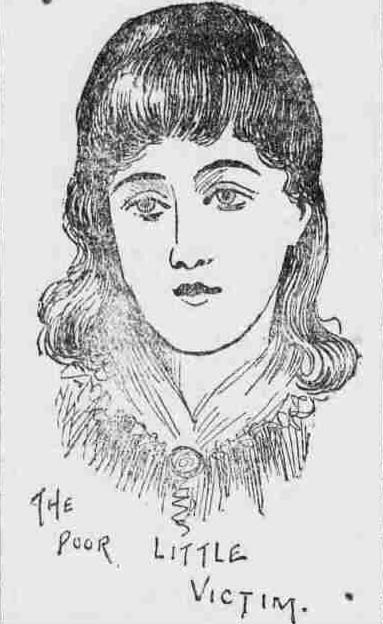
Alice Barnes 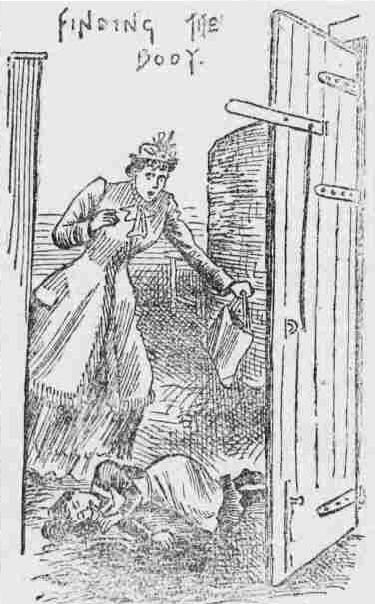
Finding the body 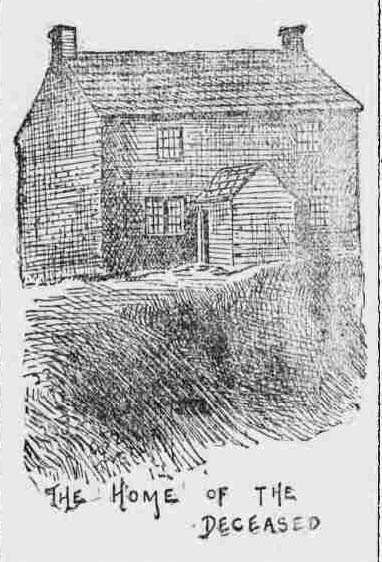
Home of Alice Barnes
So what transpired during those few minutes in between Mary leaving Alice to the body of Alice being found by a passerby?
It was reported that at around 1.20pm, a lady by the name of Martha Hindle, who was passing by the gate that led into Witton Park, just off Buncer Lane, came across the body of a child lying the gateway. At first glance it seemed Alice was already dead and yet her body was still warm but we will come back to this shortly.
Startled, Martha managed to find help in the form of police constable Ashworth who took possession of the body. Within minutes a small group of people had congregated and not too long after, Alice’s brother arrived later followed by her father, Edward who had to be restrained after witnessing the awful scenes for himself.
Upon examination of Alice’s body by Dr Wheatley (presumably at the scene) not too long after, it was quickly discovered that a red handkerchief had been brutally forced into her mouth and down her throat with one newspaper report also going on to say her throat had been slit (but no other such records or proof of this can be found). What we do know for a fact is that a red handkerchief had indeed been used and she died from suffocation.
However, and it is hard to be sure, but a couple of newspaper reports detailed to some extent the injuries Alice sustained at the hand of her attacker. From the injuries on her body it seemed likely that she was violently grabbed from behind with the handkerchief being forced into her mouth which was probably used to stifle her cries for help, before she was dragged behind the large gates just off Buncer Lane. It was here that she was punched as well as beaten with a stick until she became temporarily unconscious. Whether her attacker was disturbed no one can know for sure but from the surrounding area on the pathway where Alice was beaten, it seems she had put up a strong fight, leaving marks along the ground. Her attacker soon set off on foot and again, we can only presume he left her thinking she was dead. But Alice, after regaining consciousness, somehow had the strength to crawl just a few feet from the pathway where Martha Hindle would soon find her.
Several police officers would soon be on the scene and duly began to investigate the area for clues as to who her attacker may have been. Also, plaster of Paris was used to make an impression of a foot print found in the soil at the scene of the attack which would later prove to be pivotal in finding the suspect.
The police were quick to make some arrest with a tramp going by the name of Richard McAlister being taken in for questioning over in the town of Wigan but later released without charge. Also, another tramp who resided in Crewe was arrested and just like McAlister, he was soon released without being charged.
However, one man named Cross Duckworth had perked the interests of the local police. Duckworth was a 32 year old laborer who lived with his wife and two children in Primrose Street, Bower-fold which was just a few minutes’ walk from Witton Park. On the day of Alice’s murder, he had been drinking heavily from as early as 7.00am, frequenting many public houses not too far away from Witton.
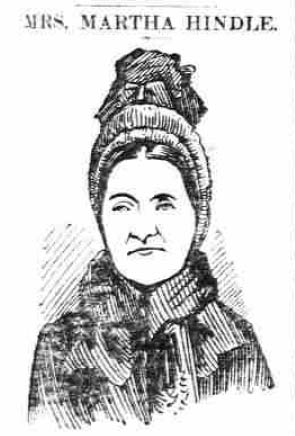
Martha HIndle 
Image of footprint 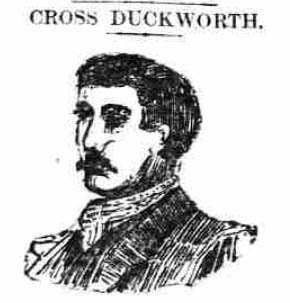
Cross Duckworth
On Sunday the 13th November, Superintendent John Myers of the Blackburn County Police sent officers to Duckworth’s home with the intention of bringing him back to the station for questioning. When asked about his whereabouts on the 8th November, Duckworth recalled that he visited several publics houses that included the Harrisons Arms, the Corporation Arms and the Turners Arms before finally ending up at the Dun Horse at around 12.30 in the afternoon. He went on to say that he made his way back home via Griffin Street and stayed there until around 4pm.
Superintendent Myers soon after speaking with Duckworth sent Sergeant Richardson and Inspector Dobson to Duckworth’s home to search for any evidence that he may well have been involved in the attack on Alice. Upon searching his home they found three handkerchiefs – two of which were of a similar pattern to the one that was found forced into Alice’s mouth. They also looked at the boots he wore and found that one of them, a right boot – matched the plaster of Paris cast they had made at the scene of the attack.
Richard Wolstenholme, sub Poster Master at 62 King Street was brought in as he practiced photography and on the 15th November he made a tracing of the right boot which matched perfectly with that of the plaster cast.
The inquest into the murder of Alice would take place on Wednesday, 16th November before Mr. H J Robinson, coroner from Duckworth Street Police Station, and it would begin with her father, Edward detailing the movements of both Alice and his other daughter Mary as he sent them both to Witton Park with some cows as he had done on many occasions before.
The jury would hear of many witness accounts of a strange character lurking around Buncer Lane, with one in particular that gave a detailed description of a man, standing on a footbridge watching both Alice and Mary as they passed by.
Edith Duxbury, aged 12 and daughter to a weaver named James Duxbury – told police that after finishing school at around 12pm, she finished her lunch and began to make her way to work at Mr. H. Harrisons Griffin Mill. Upon passing the entrance of Witton Park just off Buncer Lane, she recalled seeing both Alice and Mary as well as a strange looking man standing on a footbridge (which incidentally is no longer there). He was watching the girls as they passed him by. She also described him in great detail as wearing a dark brown billycock and a dark cloth coat, with ragged trousers and his shoes where dirty. He had a slight moustache and a pale face.
Her story was corroborated by a man named Henry Watson whose similar description of a man standing on the footbridge was recorded by Inspector Dobson.
The inquest would be adjourned until the following Wednesday, the 23rd November and would again take place at the Blackburn County Courts. This time it would be Superintendent Myers turn to speak to the jury and he would go on to tell how Duckworth was brought into the police station for questioning as well as how evidence was found during a search of his home.
Prior to all of this, on the 14th November, Duckworth had participated in a line-up where several witnesses had picked him out from a line-up consisting of seven other prisoners as the man who was acting strangely on the bridge opposite to Witton Park on the day Alice was murdered. Henry Watson, Elizabeth Riding, John Walsh, John Riley and Emily O’ Brian all attested that it was Duckworth whom they had seen on that fateful day.
Again, the inquest would be adjourned for a later date – this time until Monday 28th November and with all the incriminating evidence pointing to the fact that Cross Duckworth was the man behind the killing of Alice Barnes, the jury – after just one hour of deliberations came back into court with a verdict of willful murder and Duckworth would stand trial at the Liverpool Assizes which would take place on Monday, 12th December 1892.
So, two weeks later and on the day of his trial, in a calm and collected manner but looking rather pale, Duckworth took the stand and pleaded in a firm voice ‘not guilty’ to the willful murder of Alice Barnes.
Prosecuting was Dr. O Feely who would be the first to open the proceedings and would go on to talk in some considerable length as to the background of Duckworth from when he was in the army serving in India until his return to the Blackburn area and settling down at number 13 Primrose Terrace. He would also talk at some length as to the evening Duckworth was arrested and as to his whereabouts on the same day Alice was murdered.
Edward Barnes – Alice’s father, as well as Martha Hindle – the lady who came across her limp body would be the first to be called to the stand as witnesses. Also, police constable Ashworth would be questioned as he was the first police officer to attend the crime scene. He would go on to say that upon his arrival, he checked Alice’s wrist as well as her heart for any sign of a pulse but could find nothing. He also stated that he noticed something protruding from her mouth which he at first took to be her tongue but it later proved to be a corner of the handkerchief that had been forced into her throat.
Most telling was the account given by another witness by the name of Harry Riding who said he had seen a man matching the description of Duckworth carrying a girl through a gate but as he passed through, he dropped her from his arms before making a run over the footbridge.
Most, if not all of the witnesses who were brought into court had all pointed out Duckworth from the line-up that took place on the 14th November.
With evidence now seemingly stacking up against Duckworth, it was the turn of Superintendent Myer to take to the stand. He would produce as evidence the handkerchief that was pulled out from the throat of Alice as well as those found in Duckworth’s home. He would also talk of the plaster of Paris cast that seemingly matched the right boot owned by Duckworth.
The trial would carry over to Tuesday, 13th December and further witnesses took to the stand that would place Duckworth in several places within close proximity to Witton Park on the day of Alice’s murder. Some would say he was staggeringly drunk whereas others would say that whilst he had been drinking, he seemed in a sober state.
However, despite the best efforts of his defense, the jury would retire at around 5.30pm and return to court with a verdict of guilty, accompanied by a recommendation for mercy as they felt that the crime was never premeditated.
When asked if he had anything to say, Duckworth replied ; “I have nothing to say that has not been said. I am not guilty of the crime.”
Donning the black cap, as was accustomed when passing down a sentence, the judge said he could find no fault with the verdict of the jury. He went on to say that the crime was diabolical and he had no doubt that drink was the cause of it. Passing on the sentence of death, Duckworth remained calm and was quite composed and afterwards left the dock in a firm manner.
Cross Duckworth was hanged on Tuesday, 3rd January 1893, despite an appeal for his reprieve having been considered but ultimately turned down by the Secretary of State.
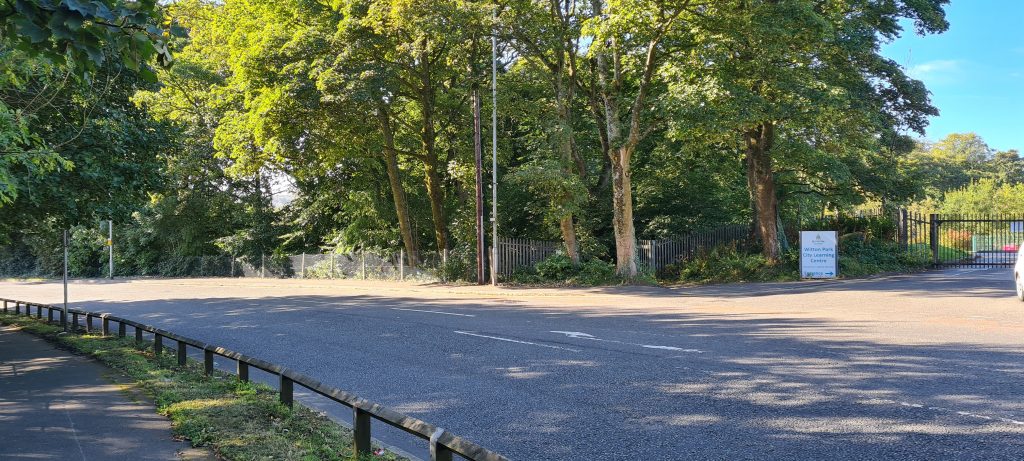
Buncer Lane 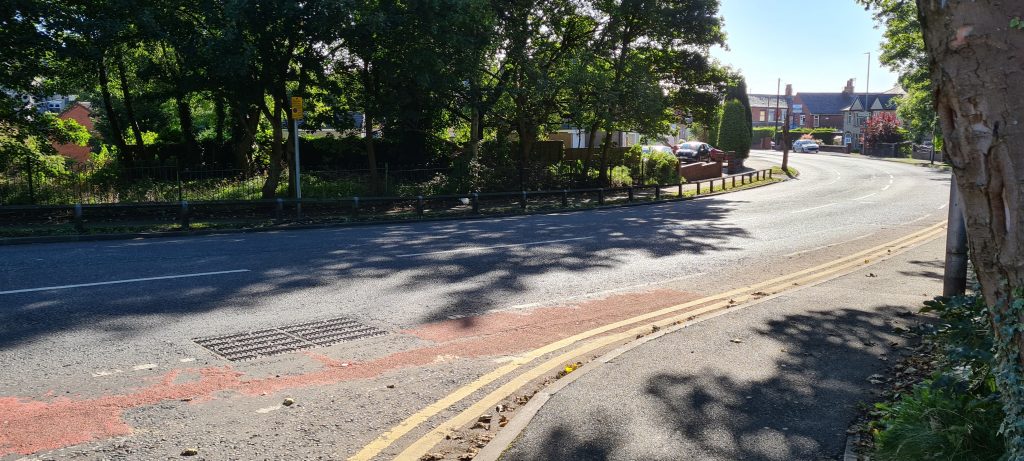
Buncer Lane 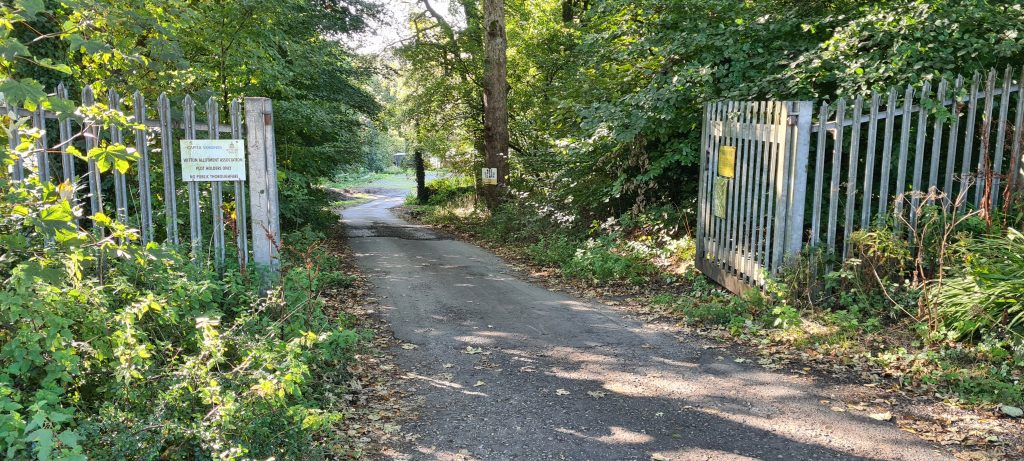
Entrance to where Alice Barnes was attacked 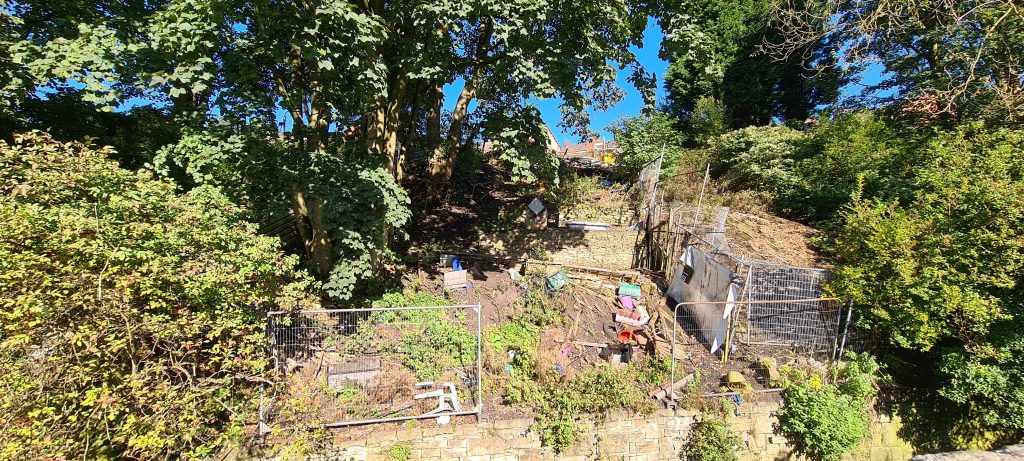
Possible location of Alice’s home 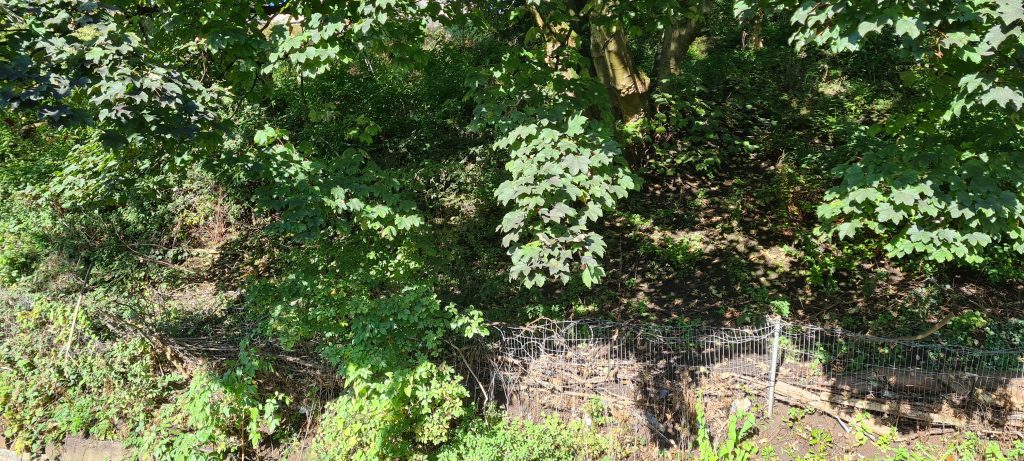
Possible location of Alice’s home 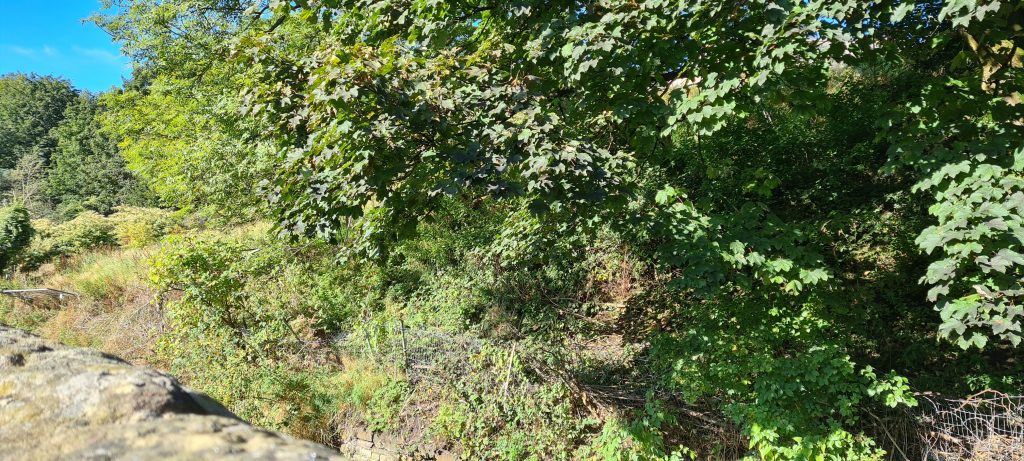
Possible location of Alice’s home
Now, I must point out that from the very beginning when Cross Duckworth was taken into Blackburn Police Station for questioning, he always maintained that he was not guilty of any crime committed and that he was not the person responsible for Alice Barnes death. Throughout all the questioning both before and jurying his trial, he always maintained his innocence. The fact that one of his right boots seemingly matched that of the plaster of Paris cast taken from the scene of the murder may have been flawed due to the nature of how many boots of the same kind where made was never taken into account and neither was the fact that the handkerchief found in the throat of Alice was not an uncommon pattern and many men owned similar handkerchiefs, this was also not taken into consideration.
We also have to question the testimonies of the many children who were brought to the stand as witnesses. From reading the transcripts and newspapers reports from the time, it seems that many could have been easily led into answering questions to the effect that placed Duckworth at the scene prior to Alice’s murder when in fact, the stranger seen on the footbridge could in all likely have been somebody completely different.
To add fuel to the fire and for people who may wish to investigate this story in more detail – two letters were sent to Cross Duckworth’s wife – one on Wednesday, 14th February 1894 and one in particular on Saturday August 11th 1894 from an anonymous person which is the most interesting. The writer claimed that the police KNEW Duckworth was innocent and that the handkerchief found within his home that matched that taken from Alice Barnes was planted by police officers to incriminate him. The writer, an ex-police officer who may have been based within the Blackburn Police Station goes on to say that it was a simple ‘get up’ to fix the job on him – and that their motto at the time was “it’s better to run down an innocent man than miss a guilty one.”
But going back to the first letter for just a moment, the letter that was sent to Mrs Duckworth on the 14th February – there are some elements in it which gives a possible insight into the murder that may well indicate that this letter is in fact a genuine statement of fact from the real murderer.
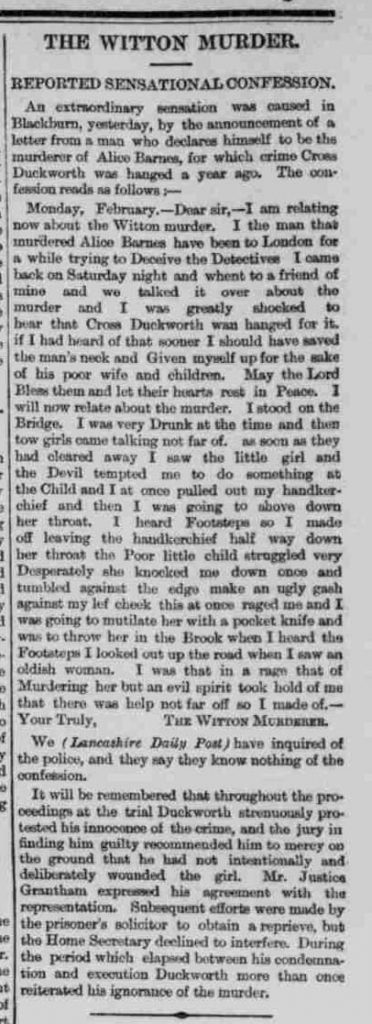
The Witton Murderer Letter 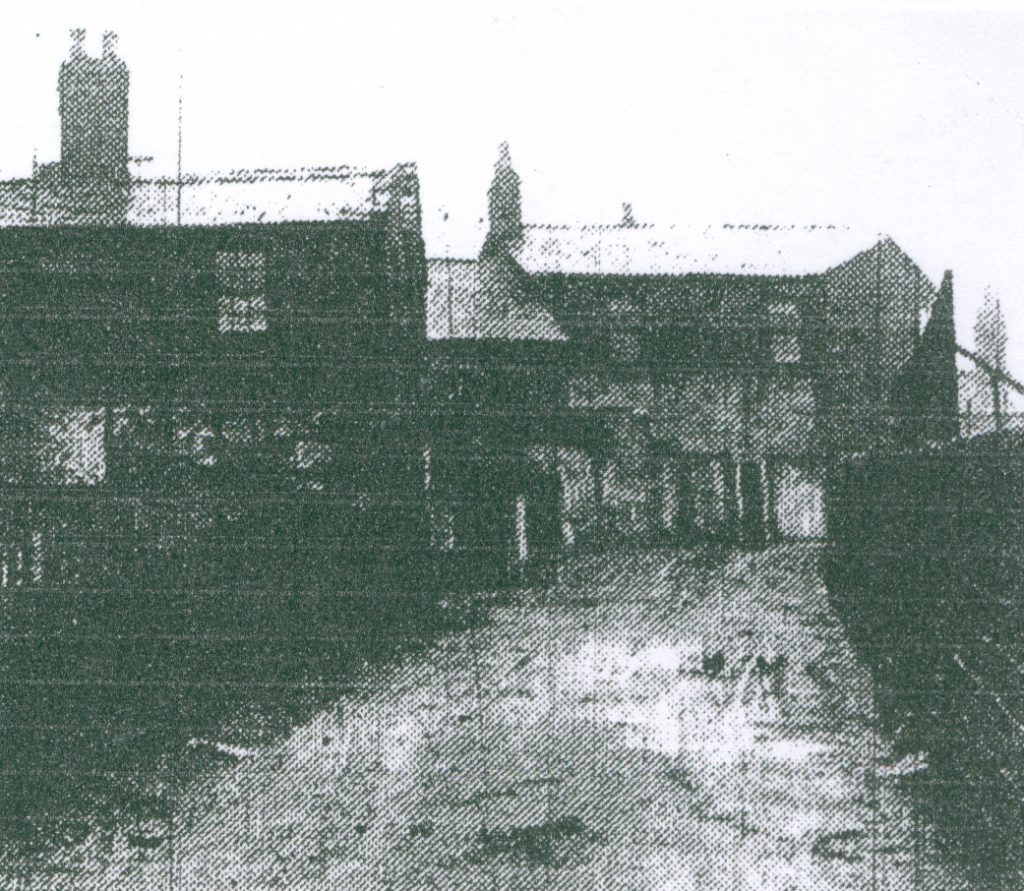
Witton Stocks / Buncer Lane 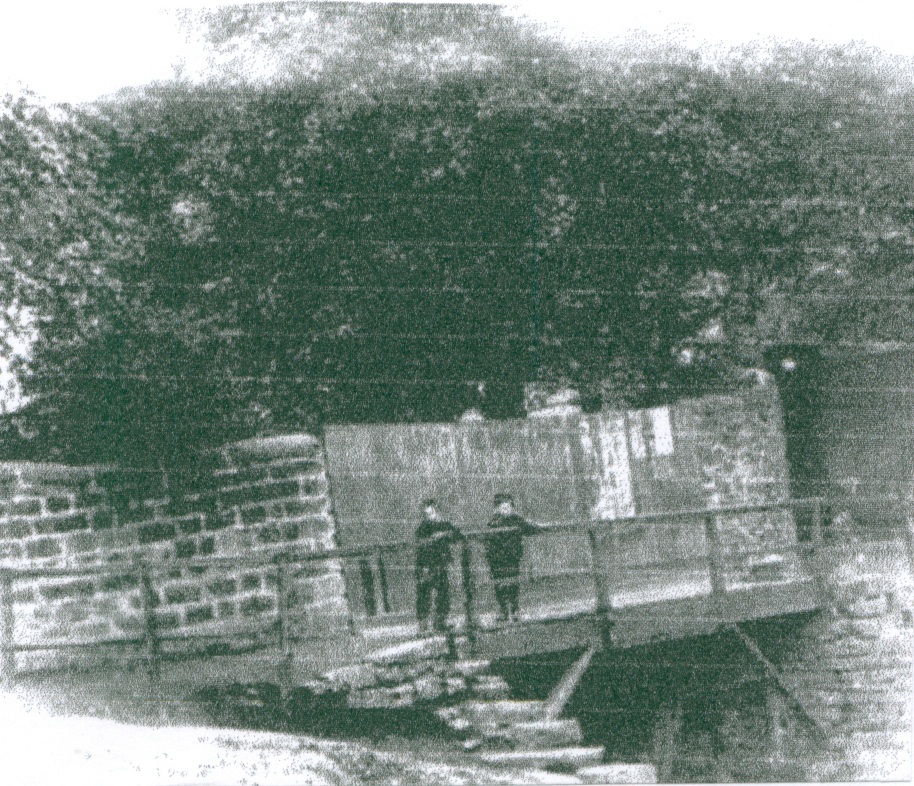
Witton Stocks Bridge
Before I go, do you remember when I first mentioned the discoverer of Alice Barnes lying on the road by Martha Hindle at the beginning of this story and how, when she knelt down to look at her body how she still seemed warm to the touch? Well, try and imagine this if you will.
Alice and Mary would have arrived at the entrance to Witton Park at around 1.10pm give or take a few minutes. Mary would return back to the farm, literally minutes after arriving at the park. So if Martha Hindle is correct with the time she said she found Alice lying in the road at around 1.20pm – this would give the murderer a window of opportunity of around 5 minutes or so to commit his evil act. Was he therefore disturbed by the sound of an approaching person coming his way as was mentioned in the letter sent by the so called Witton Murderer on the 14th February? And remember Harry Riding – the young boy who said he saw a man coming out of Witton Park carrying what he thought was a young girl under his arm? Again, the letter signed by the Witton Murderer also mentions how he was going to throw her in a brook.
This being the case, and with Alice Barnes’ body still being warm – it has been suggested that Alice’s life may well have been saved if Martha had checked, or should I say – noticed the handkerchief in her mouth and had removed it. She may well have still been alive, albeit badly beaten and in a serious condition, when Martha left her in the road just off Buncer Lane. Her tiny, broken body had barely enough energy to pull the handkerchief out of her own throat and she would finally succumb to the attack with suffocation being the main cause of her death.
So with all that has been said, you have to wonder – was an innocent man executed for something he never did and always maintained he never did right up until the day he was hanged?
Alice Barnes funeral took place just four days after she was found lying in the gateway. Several hundred people came out of their homes to pay their final respects to the young victim, lining the pathways and roads as her coffin was slowly brought out from her home at Redlam Farm.
The horse drawn carriage that contained her body would slowly pass through Redlam Brow onto Ashley Gate and towards Preston New Road before finally arriving at St. Leonards Church, Balderstone just a few minutes after 2pm in the afternoon. The inscription on her gravestone reads ; “In loving memory of Alice Barnes who was born July 15th 1883 and fell asleep in Jesus November 8th, 1892.”
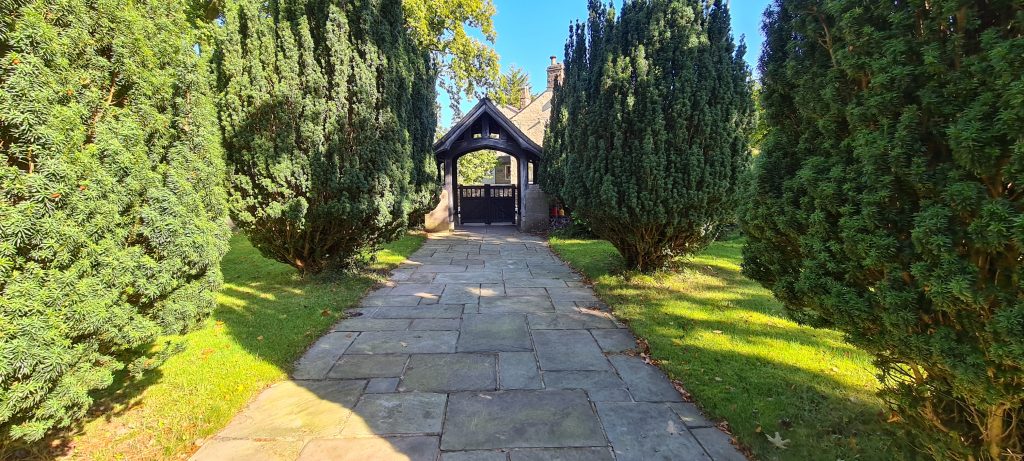
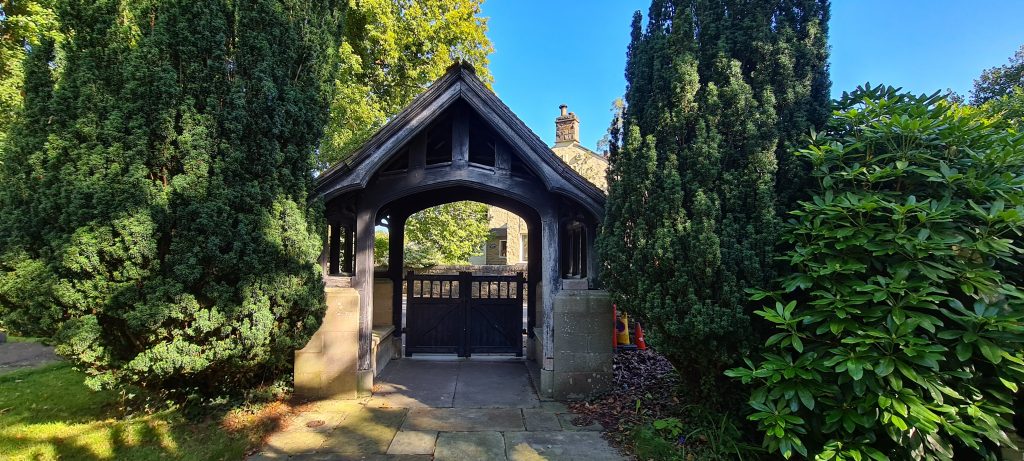
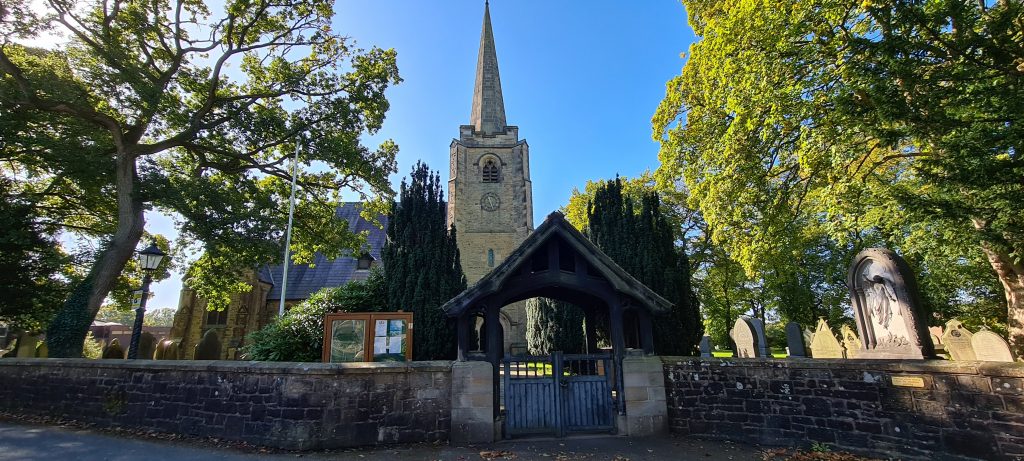
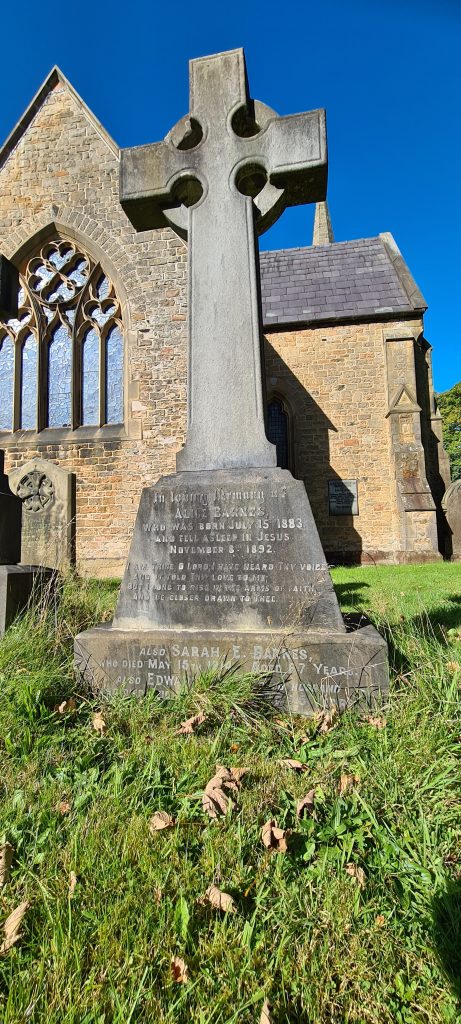
Family grave of Alice Barnes 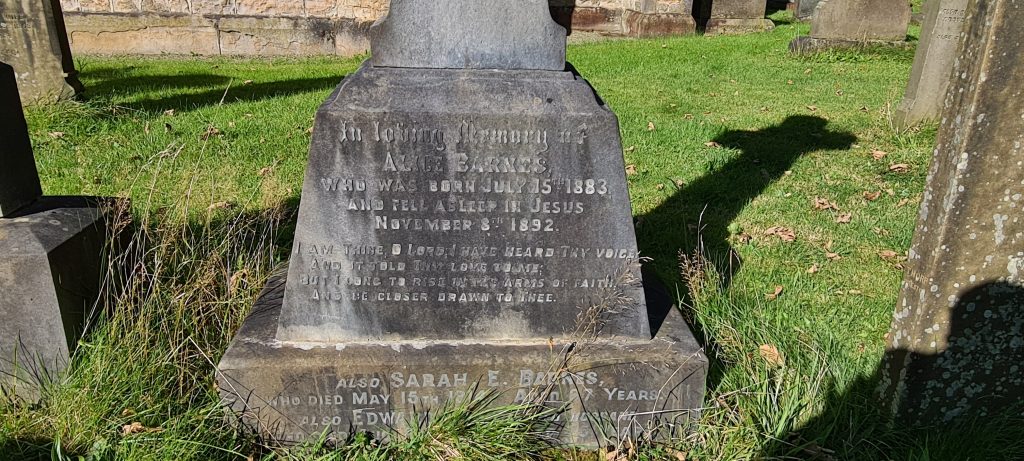
Final resting place of Alice Barnes 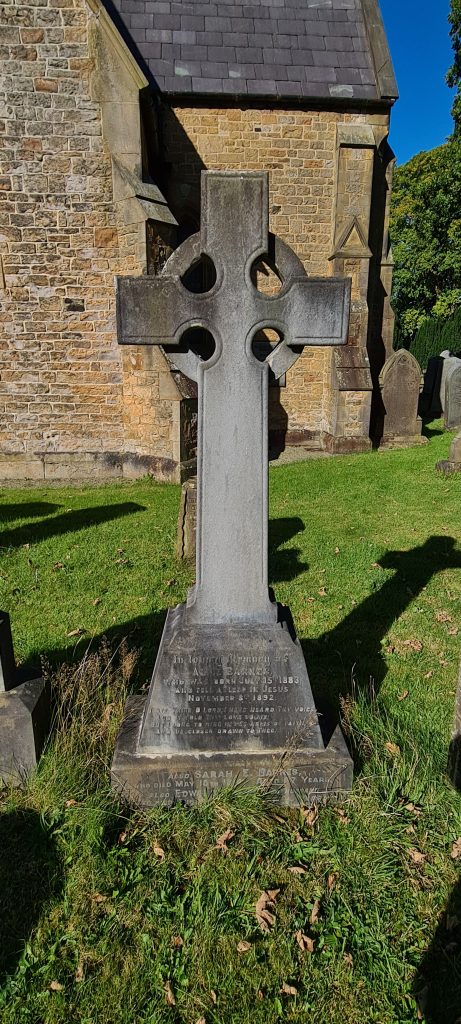
Family grave of Alice Barnes
Thanks very much for listening. I hope you enjoyed this story and if you want more please show some support and comment down below. You can follow us on twitter and instagram – links are also down below – but in the meantime, take care and we will be back soon with another story from the past.
Sources used for this story ;
Yorkshire Evening Post – Wednesday 09 November 1892
Blackburn Standard – Saturday 12 November 1892
Blackburn Standard – Saturday 03 December 1892
Manchester Courier and Lancashire General Advertiser – Tuesday 13 December 1892
Burnley Express – Saturday 18 August 1894
Shields Daily Gazette – Friday 16 February 189
+ many more courtesy of the British Newspaper Archive – www.britishnewspaperarchive.co.uk
Special mention to Maggie B Dickinson for her help with valuable information relating to this tragic story. You can read more by visiting her website at www.maggiebdickinsonblog.com

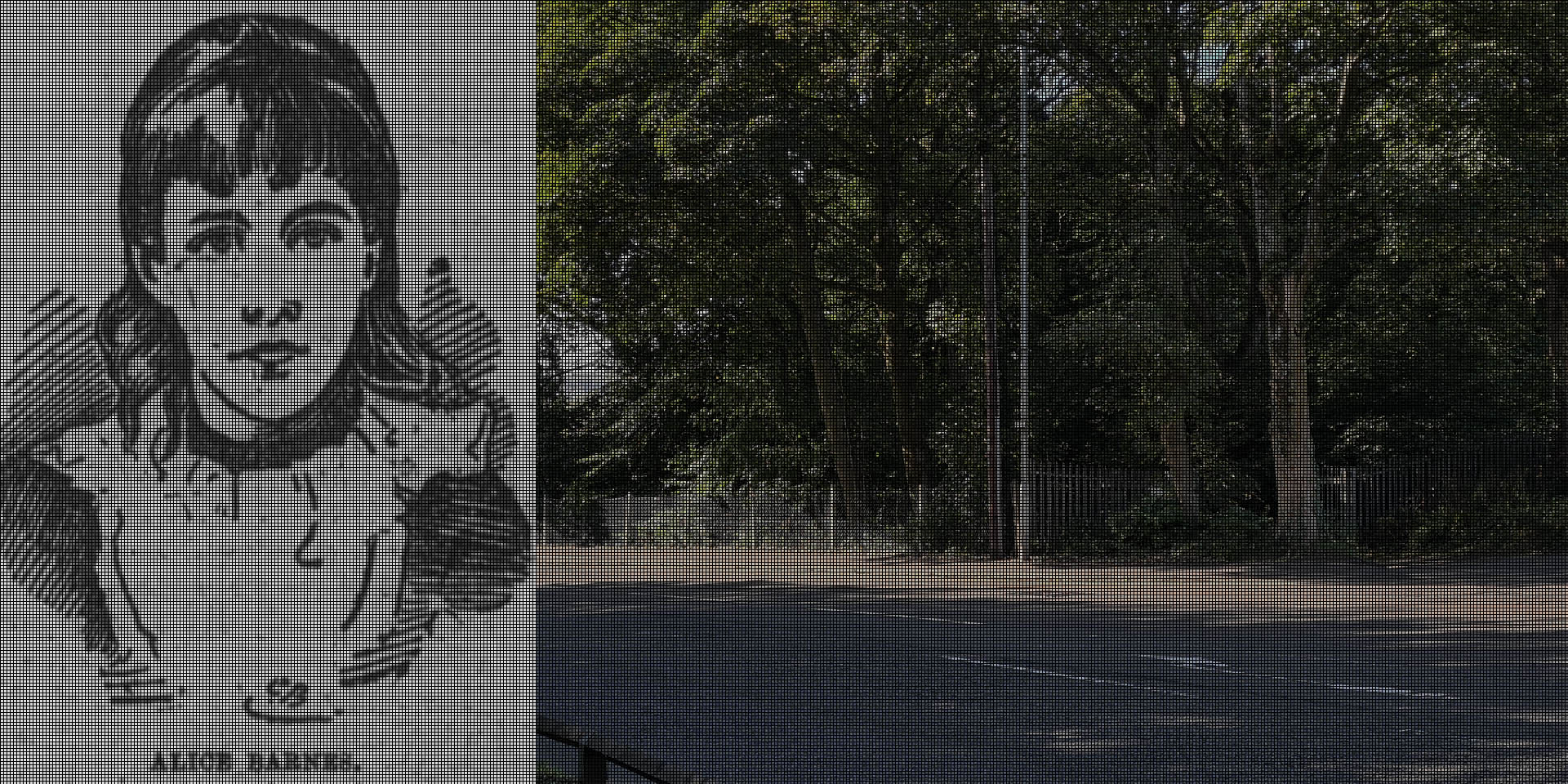
Leave a Reply